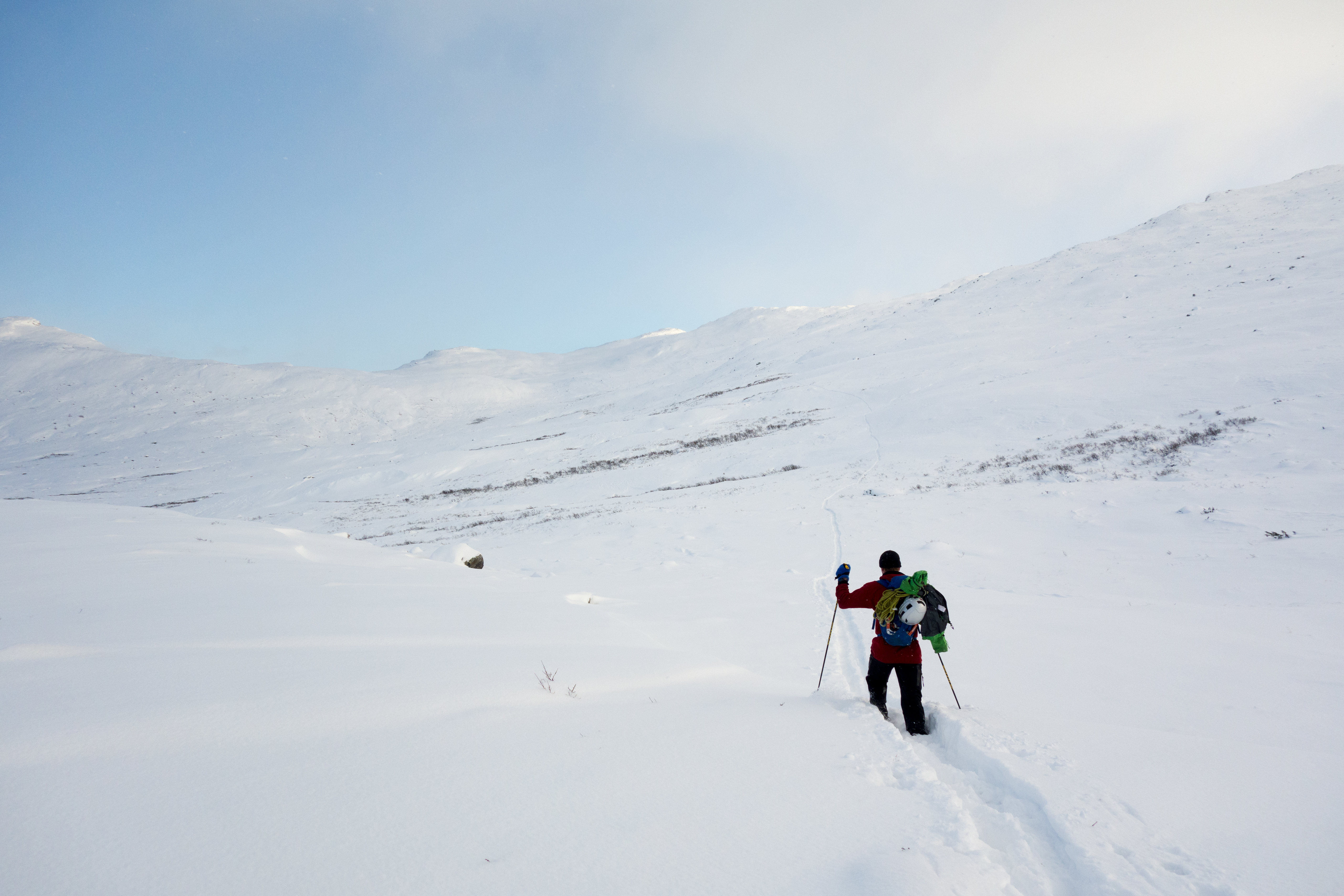Hydalsfossen: The Long March
Plan A had been the general area of Vang, which we hoped would offer enough options and flexibility, but in reality nothing was ready so early in the season. Luckily Jacob had driven down from Sogndal early on the Friday, so we had plenty of time to switch plans.
Hemsedal was the obvious replacement, although there was no obvious new plan beyond that. There had been a recent dump of snow, which made the likes of Skogshorn possibly too slow going. Jacob is also Mr Skogshorn and has climbed most of the well-known routes. We knew that Grøtenutbekken was in steep, good condition currently but we also knew that a friend planned to a second attempt in successive days, and so we gave the route a miss on that basis. The loose plan instead was to drive through Grøndalen after dawn to inspect conditions but likely continue up the valley and try Hydalsfossen. This meant a slightly later start than ideal, given the limited daylight hours.
As largely expected, Grøndalen didn't look appealing enough. Vøllokula and World Cup Isen looked climbable but Hydalsfossen seemed a grander objective to aim for.
We were without skis or snowshoes as a result of being ill-prepared for a change to the original plan of Vang. This wasn't ideal, given we were now planning a 3km approach to Hydalsfossen, at elevations rising from 1000 and 1350m, where there would likely be lots of snow to contend with. We figured we would cope though.
Luckily there were some ski tracks heading in the same direction, although these were of limited benefit in reality as our boots readily disappeared through the tracks with each step. The ski tracks also followed a route that was best suited for skis, and not ideal for those following on foot. They skirted gentle powder-rich north-west facing slopes for the main part, in an indirect manner that probably added another kilometre to the approach. Typically the snow was shin to knee deep, but on occasions this rose to thigh deep, at which point the going slowed dramatically. We did a good job of switching the leading nonetheless to share the burden. It was a cold morning and midway through the approach I needed to stop and restart the circulation in my fingers by flapping my arms for five minutes.
 |
| The pot-holing approach |
It took us three hours of trudging to reach the top of the route, then a little longer whilst we waited for the pair of climbers whose ski tracks we had followed to organise their abseil and start down the route. At least we could use their abalakov thread at the top of the route. A further abalakov thread brought us to the start of the ice.
The breadth of Hydalsfossen meant that it was easy to pick an independent line from the neighbouring pair of climbers. We opted for a line to their left which started via a vague, short open corner/chimney. The climbing commenced at 2pm, but I expected the general pace of the day to pick up, now we were on steeper ground.
The climbing started in an efficient manner, up an initial slab and through the vague groove, without the need to stop and place too many screws. Thereafter the rate of climbing slowed due to some variable ice. A weak crusty top layer covered most of the flatter sections. This either needed to be cleared, else a minor change of course made in adhoc fashion. This created a lot more shuffling around than expected to avoid getting out of shape as result of the satisfactory axe placements repeatedly being more lateral than expected. Nevertheless the climbing was nearly all off-vertical, which meant I rarely needed to commit much weight to the axes. I managed to lead close to a full 60m, meaning Jacob could could probably reach the top from this position. I knew from climbing the route previously, and from the abseil, that it was possible to reach the top in two pitches, and that face was closer to 100m than than 140m stated in the guidebook. Jacob's task of seconding the first pitch looked far from straight-forward due to the amount of spindrift pummelling down the route by this stage, mainly as a result of the team higher up and to our right. Conditions were descending into what could best be described as 'Scottish'.
We were losing light by the time Jacob started the second pitch, but he disappeared over the top in good time. It was time to switch on the headtorch by my turn, but with a top-rope hanging down, and the bad ice cleared, seconding the pitch went swiftly.
The descent back to the car was not as easy as hoped. The other pair had skied back down our tracks, freshly grooming the snow in the process and filling in the potholes. At least we had gravity on our side, although I could feel my triceps working overtime to stabilise myself with my poles. The descent seemed to go on forever in the dark. The silhouette of Vavatn, the large lake beside the parking area, gave hope that we were nearly back, but in reality there was still around half an hour still to trudge.
It was 7pm by the time we reached the car, which was a nine hour round trip. It was an excellent alpine day so early in the season in order to test the general hill fitness. What's more the day was a stark contrast to when I had previously climbed Hydalsfossen late in the season, when it had been a beautiful spring day, with blue skies, wellconsolidated ice, and hard neve on the approach. It's always good to have an alternative experience.



Awesome post this one realy helped me at my point of confusion :) Realy thanx alot for sharing :) Keep it up ;)
ReplyDeleteSingapore rock climbing